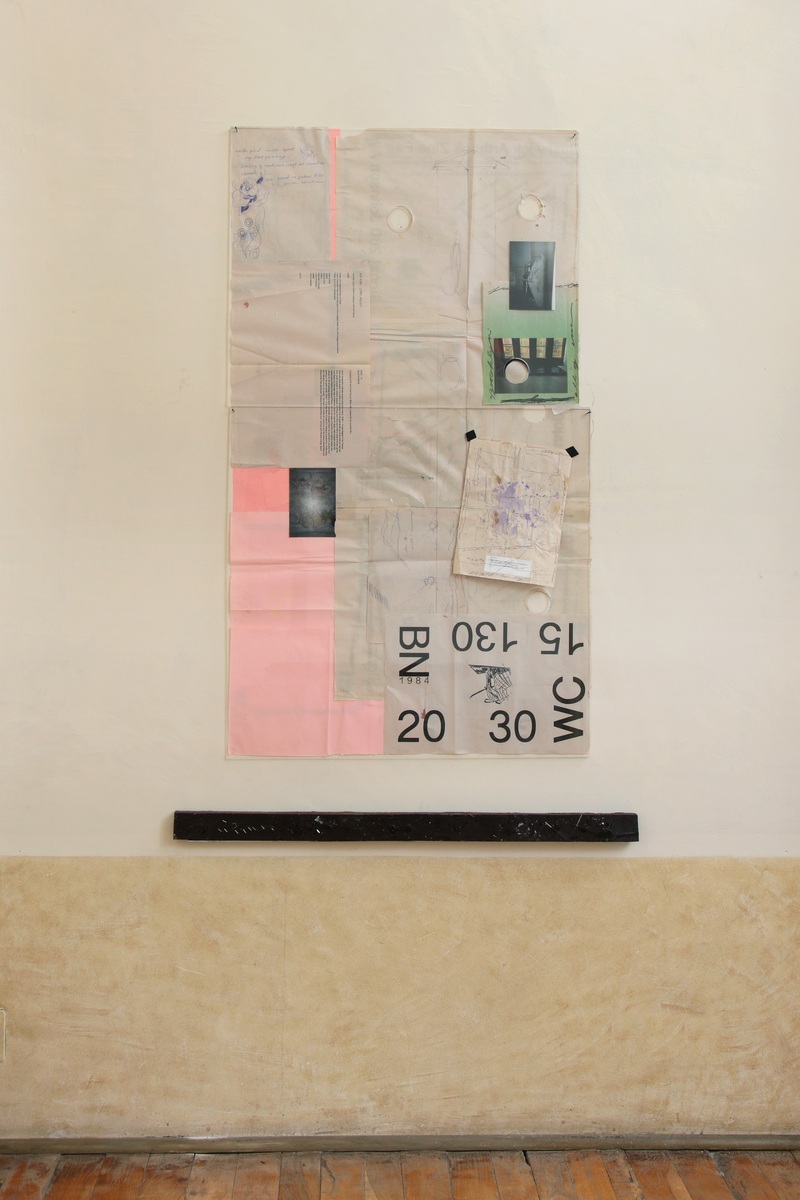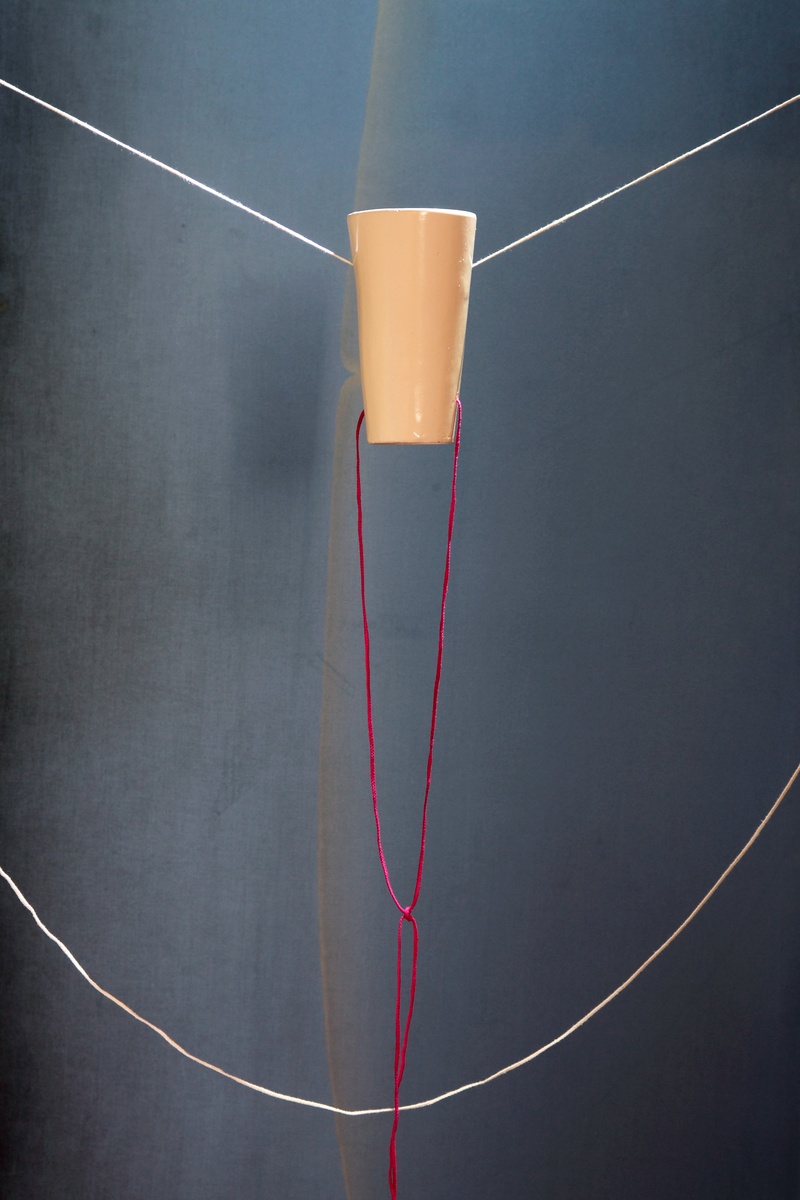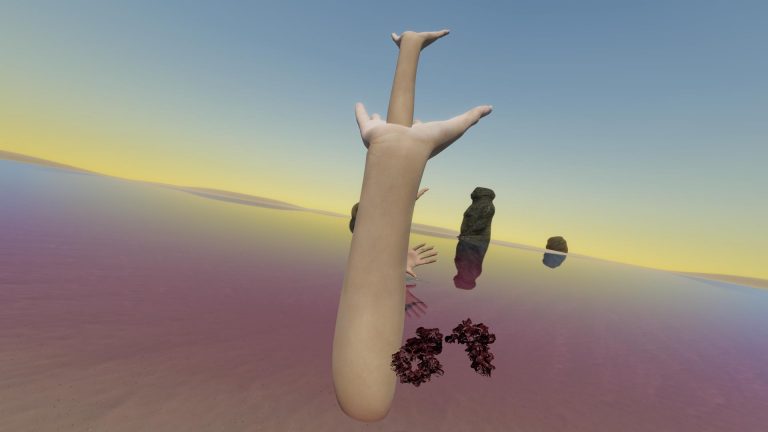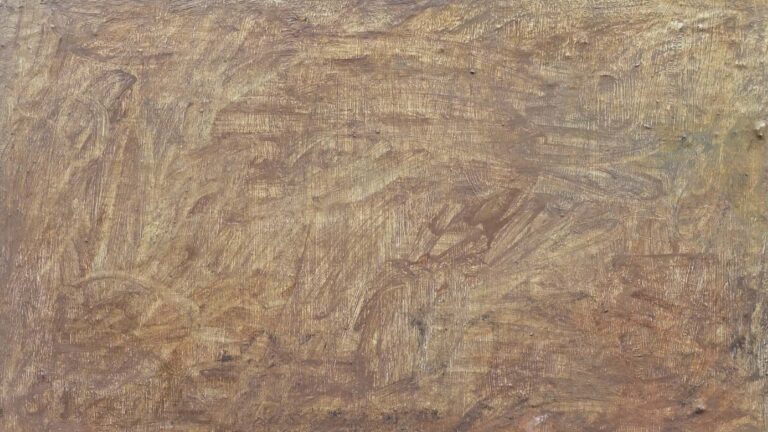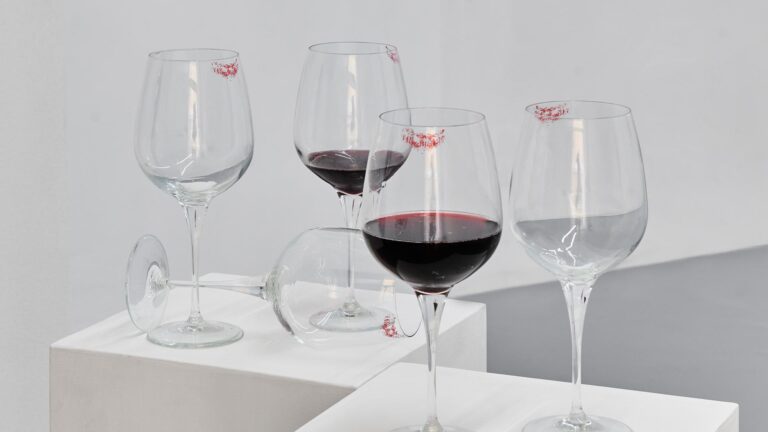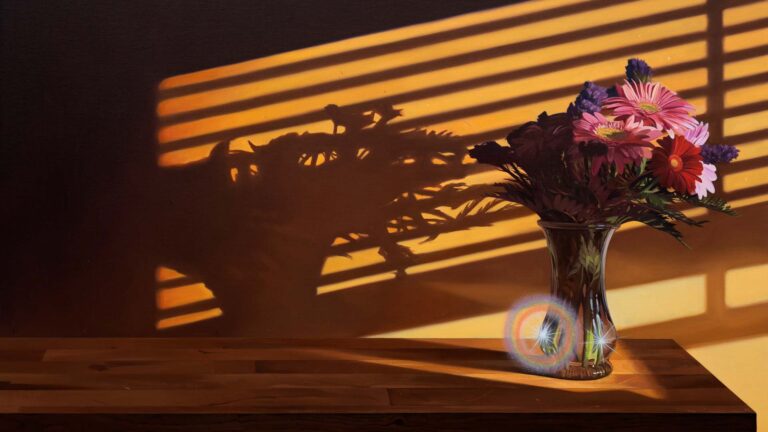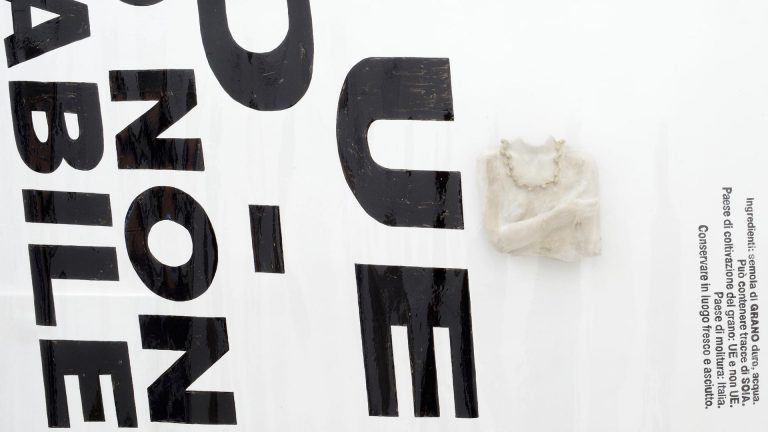Artist: Nikholis Planck
Exhibition title: Proctor Silex
Venue: NEOCHROME, Turin, Italy
Date: April 14 – May 28, 2016
Photography: all images copyright and courtesy the artist and NEOCHROME
NEOCHROME is pleased to present Proctor Silex, the first European solo show by Nikholis Planck.
“Life should be full of strangeness, like a rich painting,
but it gets worse day by day, I’m a potential DJ.”
—Mark E Smith/The Fall, How I Wrote ‘Elastic Man’
The art of Nik Planck appears in various forms at various times—drawings, collages, paintings, posters, publications, stages, staged events, sculpture—often intermingled, with images, objects and text migrating from one location to another, at times recycled. A work seen just last week may mutate into something else tomorrow, no longer extant or transformed, its very material inhabiting another form, wrapped in another skin. These references are in every sense appropriate, since Planck’s mercurial ways suggest at all times a sort of bodyoperating. Fluidity of thought continually manifests itself in the flow of things readily identifiable as works of art, yet works whose strangeness remains fully intact. He takes whatever course and detours a given situation demands or requires, following and deviating from his own internal map.
Energy, whether inscribed or whispered, improvised or rehearsed, cryptic or considered, is made visible. Information is both compressed and elastic, volume will rise and fall, works come forward and recede, often at different speeds. Images are both subtle and insistent, visually amplified and intimate, a dynamic between public and private that parallels the space between studio and gallery, performer and audience. Nik Planck’s art makes room for viewers and draws them in, never holding them at arm’s length, aware that a work can be seen as a sort of fulcrum between art and its audience, between thought and expression, with the understanding that art is an experience above all. This flies in the face of our current times, and in many ways Planck swims against a rising tide. In a moment when too many younger artists are willing to adopt a signature style based on a one-dimensional “idea”, beating it to death with a plastic mallet—a DJ who only plays the hits, or hit as the case may be—playing it safe, Planck has slowly but surely established a recognizable repertoire that always feels experimental, a rebellious jukebox, we might say. No “song” is ever played the same way twice. Essentially there is in his endeavor awill to misfit, a shambolic but determined approach rarely seen these days, marked as they are by predictable and formulaic consistency, repetition without transcendence. Nik Planck forges his signature from one work to another and always, even on a sheet of paper or an otherwise even surface of canvas or board, in three dimensions.
There is an acoustic element to Planck’s work, as if he views every exhibition space as an auditorium. The urgency of his writing might as well be accompanied by the sound of frantic scratching from a pen, an instrument whose ink is often flowing beyond visibility, his fractured syntax not only coming through as the amplification of an inner voice, but a voice that rushes to keep up with itself. The sense of getting something down before it’s lost, this is palpable in his work. And yet there is a stillness, though with Planck one identifies it as a restless stillness. In his omniverse, all is set in perpetual motion, almost nothing can ever be ‘set in stone.’ All things and situations need to remain pliable, on a cerebral as well as physical level. One discerns the traces of pressure applied to a waxy surface now set, a surface which can just as easily be liquified once again. This relates to music as well, since his recycling can be thought of as a remix, a mashup. Planck operates in a space between futures and pasts, not necessarily the present. In this respect we can identify an entropic facet to this work, one filtered through punk, a need to harness disorder within a system, to mirror and willfully appropriate its effects. Robert Smithson comes immediately to mind, as well for his dialectic of wet and dry, and a terrain he referred to as the “climate of sight”. In 1968, with The Mud Pool Project, he proposed to:
1. Dig up 100 ft. sq. area of earth with a pitchfork.
2. Get local fire department to fill the area with water. A fire hose may be used for this purpose.
3. The area will be finished when it turns to mud.
4. Let it dry under the sun until it turns to clay.
5. Repeat process at will.
Nik Planck’s project can be thought of as a Pool of Wax with a water slide, far less Johnsian, despite the earlier artist’s encaustic surfaces and cast objects, though these may be observed in relation to Planck’s cast paint cans and the milky ground into which he embeds objects and the milky molds from which objects emerge, floor Plancks most recently. “My duty as a painter”, he has said”, is to bring the attention to the floor.” While his statement begins with a declaration of responsibility, and may sound antiquated in our coolly distanced post-time, it ends with a takedown, from the wall to the floor. Here, Planck wants to draw our attention not only to a ground that connects the studio and the gallery, but one inevitably shared by artist and viewer. (The artist is also a viewer). One might wonder: What about the wall? But the wall upon which so much art is hung, the supposedly neutral white wall, has become an anonymously prescribed surface that extends without limit, that levels everything it carries so effortlessly. A locational sign or map will often indicate: You are Here.Artworks that refer to a ground which has shifted, however, create a Here both familiar and unknown, a Here that is also Elsewhere. The gallery itself can be thought of as an oversized mold into which materials, images, objects and even people are poured, a container to be filled, emptied and re-filled month after month, a non-site. Some artists accept this without question, but not all.
Planck’s waxy pool is altogether more Smithsonian by way of a studio/post-studio location/dis-location: imagine the desert and Mad Max , the ultimate collision of futures and pasts. Planck’s re-imagining of a notorious scene from the 1979 movie, where a man is handcuffed to a car that’s about to explode, overlays the minimalism of Beckett and the high-wire violence of George Miller, polar orchestrations of imminence. Temporality is part of the equation. Inherent in Nik Planck’s work is our observation that something has taken place as well as an expectation for something about to occur. There is an immediacy and there are traces, markers, signposts, clues left behind, immersed, an undertow. Whatever form a work may take, Planck always intends to create a platform, for himself, for others.
His stages: locations where something has happened or will, set upon the gallery floor, they may also be seen as rafts, suggesting that artworks are otherwise cast adrift in this placeless place.
His posters: created for his own shows and also for group shows, these are offered rather than commissioned, and in a time when printed announcements are all but disappearing, this amounts to another level of generosity as well as resistance.
His ‘zines: these similarly insist that events and exhibitions should be announced and documented, while also suggesting that events themselves, passing one after the next, are as ephemeral as ephemera. The ‘zine is a kind of unofficial record inserted within the flow of authorized publications, and yet Planck, coming out of a history of publishing that is done outside official channels, understands that the public can assert itself and participate as authors. His bootleg copies of the book deus irae, by Philip K. Dick and Roger Zelazny, which ends with a mural, an official portrait (of dubious origin), are less a question of “fair use” and more an active engagement with surrogates, textual trompe l’oeil and deception, though deception is no less real.
His collages: in one, part of an advertisement asks and demands: What are you waiting for? Make it now! Planck needs no such direction. In another, we see the sketched out plans for his previous exhibition in New York. The collage is a sort of fulcrum for ideas and events that may happen or have, a presentation realized and recalled as a plan, an approach, provisional in nature. And though these assembled works on paper are flat, they point to how multi-faceted his work is, in fact, as we see how information enters the bigger picture from different angles, representing various aspects of his larger project.
His drawings: often paintings on coated paper, a slippery surface that allows for motion and chance, gravity and grace, a form of automatic “writing”, a poetics whose organic character has no use for memorization, meter or rhyme.
His paintings: ephemeral locations as well, since Planck doesn’t so much apply paint as he applies painting, uses it, brings it to bear upon his wider activities and interests. Is he ever fixing an image or speculating upon its appearance? This is similar to the approach of the artist Jutta Koether, whose example is surely of consequence to Planck, as she has united painting, performing, writing and music in her work over the past thirty-some years, classifiably unclassifiable, always seeking an unrestrained freedom, pushing an activity to account for its own questioning and aware of its history. For both of these artists, the studio and the gallery and the world are ever-present. The space between them is near and far. Distance is more of an attitude, a position taken, particularly with respect to painting, evident in the work of another artist who applies painting, Michael Krebber, and upon which the printed poster, the announcement of the exhibition, has been casually draped. Along with the established example of the dandyish Krebber, Planck’s unfolding practice and sense of play shares an indifference which is entirely engaged. Planck on numerous occasions has turned the gallery into his studio, creating works that may take a normative and portable form yet insist on being acknowledged as site specific. In the end, it almost doesn’t matter where a work is made, for it is produced and comes alive in the place of its reception.
A recent shaped canvas, an elongated rhomboid, has as a direct reference a pair of Concetto Spaziale by Lucio Fontana from 1956, L‘Inferno and Paradiso, Heaven and Hell. Planck’s work, an individual canvas, claims an in-between state: painting as purgatory, a place not of atonement but of fluidity, where one operates freely. Fontana would never represent Heaven and Hell realistically. Rather than show us how they appear he would, instead, show us how these worlds feel, a palpable representation. Planck’s object-type painting, a sort of shield/coffin lid, would have us see painting as yet alive and never entirely defenseless, behind or beneath which resides the figure of the artist, otherwise unseen. Another new painting of Planck’s quotes Albert Pinkham Ryder, the 19th century eccentric, to wit: “Life in NY, a new society for art, first critics, early patrons”. Hovering between perverse humor and poem-manifesto, the appropriation of this text is identified as an intentional “camping up the melodramatic feel of the painting”. No doubt Planck’s attraction to Ryder has something to do with the artist’s casual and obsessive relation to an activity that resulted in works which were equally alive and unstable, that would alternately remain liquified or eventually ossify, proving to be a conservator’s nightmare and, readily copied, a forger’s dream. From the site of production to the non-site of presentation, holding out hope for the embrace of critics and collectors, as well as for an elevated sense of community, both painter and painting must speak, even if by a selfconscious act of ventriloquism. With the idea of a voice being thrown, clues left behind, references scattered, objects set within a wet surface, we understand that things for Planck are always embedded, always written, before and after the fact. This is an allusive art, with every act an act of inscription. Everything alludes to something else, to somewhere else, and in its insistence on free-association, it is also in every way, and pleasurably, elusive.
—Bob Nickas
New York, Feb. 2325, 2016
Nikholis Planck (b.1987, Arlington, VA) lives and works in New York.
Selected exhibitions and projects: Simone Subal (New York), Anton Kern Gallery (New York), Rachel Uffner (New York), Signal (Brooklyn).
Nikholis Planck, Eclipse of Flowers, 2015-2016
Nikholis Planck, Keys & Lemons; Long ‘morrow (DJ, EJ w/ SK), 2015-2016
Nikholis Planck, Minmay (Do U Remember Macross?), 2016
Nikholis Planck, Squatting positions (Snake Irae Floor Open Centiva), 2013-2016
Nikholis Planck, L’Inferno (L.F), 2016
Nikholis Planck, At The Window And In Bed, 2015-2016
Nikholis Planck, Words of Expectation, 2016
Nikholis Planck, Squatting positions (Upstart Americans), 2013-2016
Nikholis Planck, Squatting positions (Freedom Saw D.O.), 2013-2016



















